
Date:2020-08-23 | Visitcount:1664
On the afternoon of August 21, ProfessorNoriyuki Tanaka, Professor Koichi Takaki, and Associate Professor YUAN Chunhong,from Iwate University in Japan delivered online lectures entitled “NewTechnology and its Application in the Fishery of Japan”. The event was host by professorHU Yaqin.
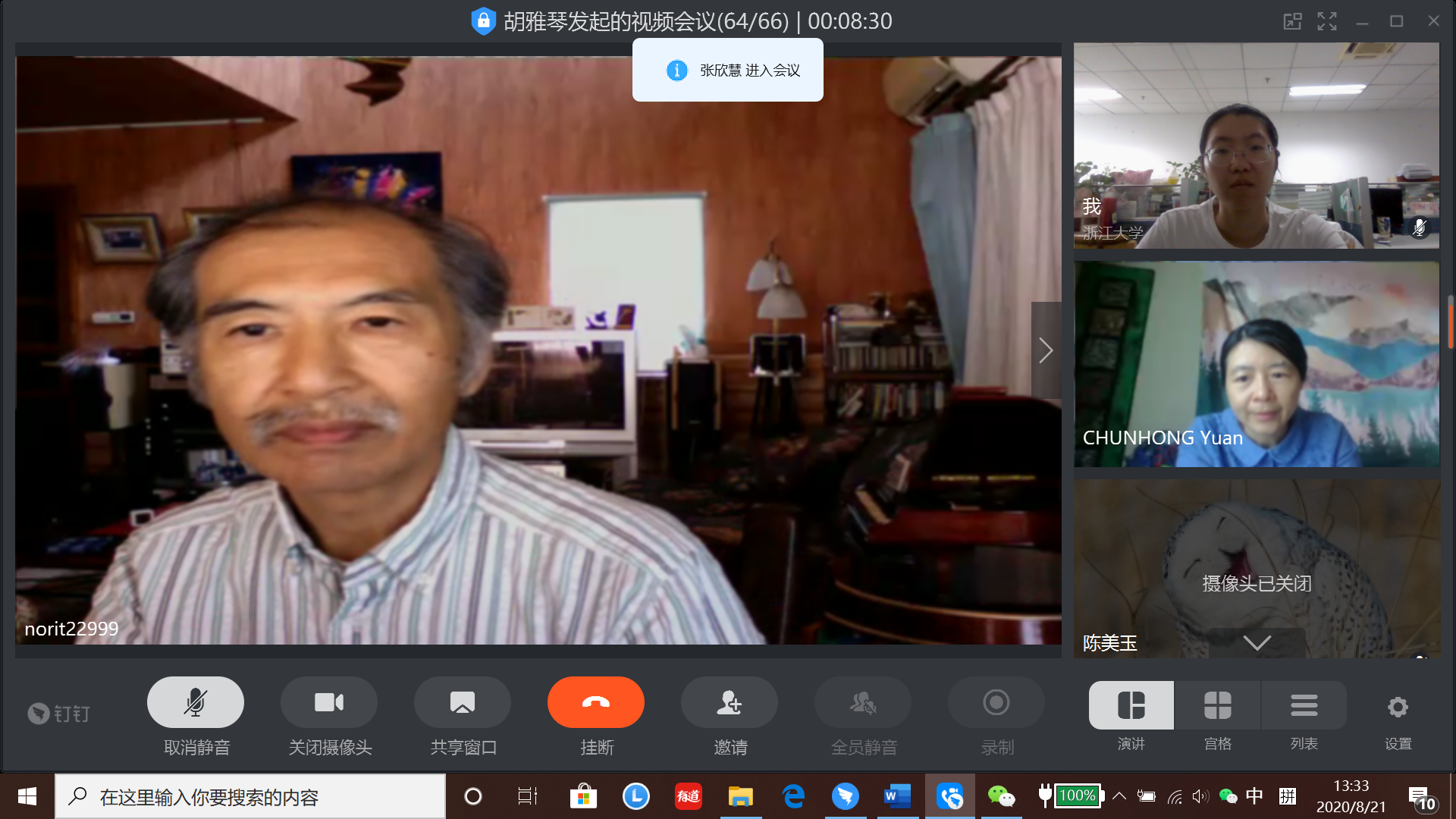
At first, Dr. Noriyuki Tanaka gave alecture on “No Waste Usage of Fisheries Resources - Traditional Practicesand Future Prospective”. He briefly introduced the trend of food securityfor global population. He pointed out that annual loss and waste along the foodis ubiquitous, about 30% in cereal products, 40%-50% in fruits and vegetables,including roots and tubers. Besides, with increasing importance of marine foodin the diet, people call for effectiveusage and sustainability of marine products for ecological balance.

So why noteating whole which provides us perfect nutrition? Dr. Tanaka introduced theidea of whole food and its development. Japanese traditionally tried to use oreat everything they caught or collected from wild-life (In Japanese, Marugotoshoku 丸ごと食), because they think thatany healthy animals’ composition is the same as theirs. In 2000s, whole foodconcept met “shokuiku食育”, then expanded as a movement to harmonize diet, health, life andenvironment. And there are more activities on whole food in Japan in recentyears, such as book publication, seminar and cooking school, visiting farms,etc.
Then, Dr. Tanaka reviewed some processedsea-foods with merit and demerit analysis, including simmered fish in sweetenedsoy sauce, salted and fermented squid, tempura of small fish, primitive“SURIMI”, fish sauce and other typical course dishes in Kindaitei restaurant. Problemslike too hard, too much salt, too much sugar, or too much fat in traditionalway need to be solved. These must be adapted to meet both younger generationand elderly’s needs. Therefore, it is of great significance to developscience-based approaches rather than trial and error with experience-basedmethods.
Finally, Dr. Tanaka ended the lecture withthe sentence “You are what you eat!”. He encouraged students to seek forfurther advances to protect marine ecosystems, and to maintain sustainable seafood utilization to meet future food demands.
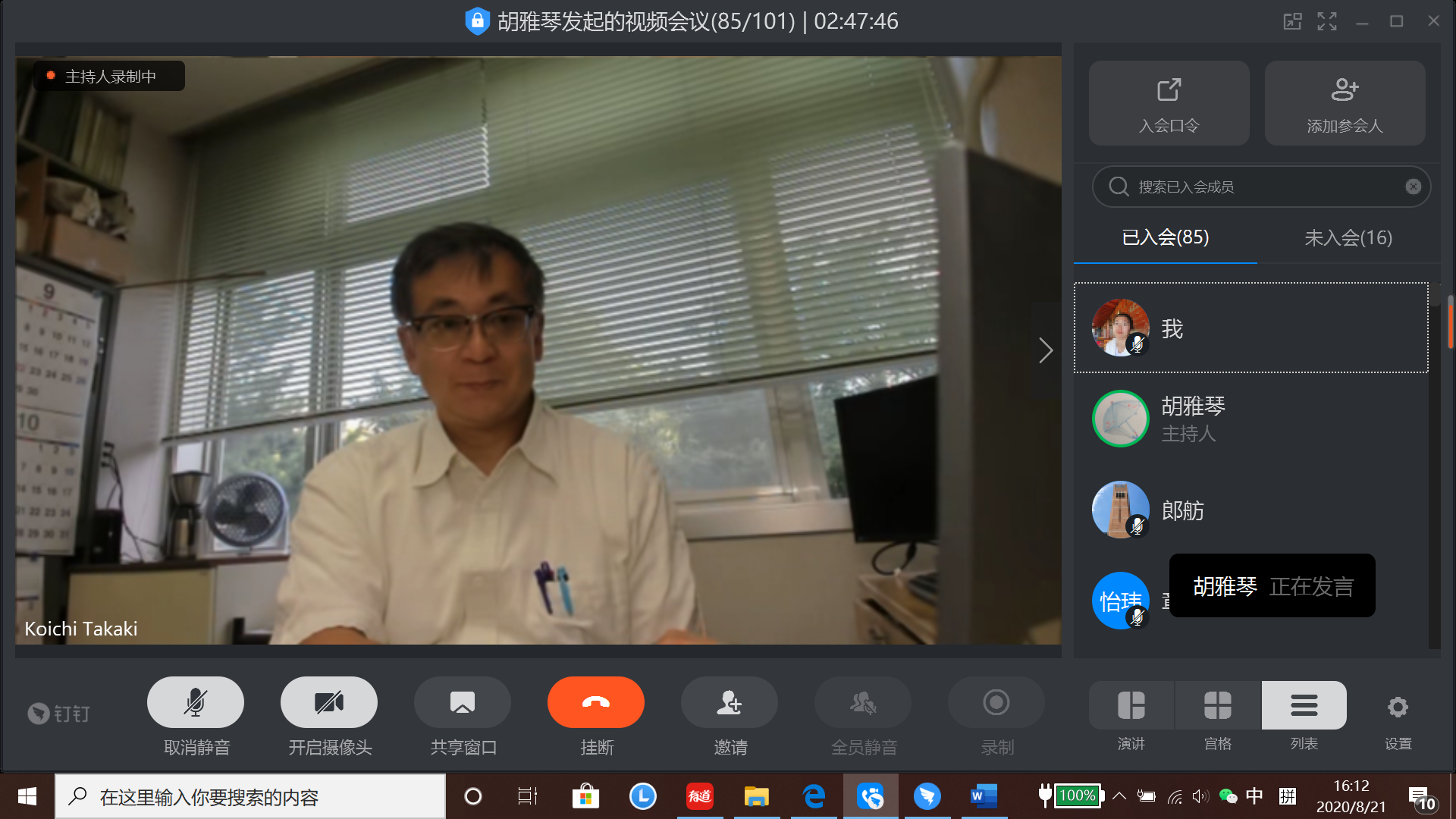
Next, Dr. Koichi Takaki gave a lectureon “Pulsed Power and Plasma Applications for Agriculture and Food processing”.He introduced his research on developmentand employment of repetitively operated compact pulsed power generators with amoderate peak power for applications of agriculture and food processing.
Electric power is a kind of new technology,which could easily change to heat, stress, radicals, etc. When electric fieldexceeds breakdown electric field (35.5 kV/cm for air), electrostatic discharge(plasma) occurs. Plasma is widely applied in surface functionalization,protective coatings, semiconductor industry, biomedical, packaging, energyproduction, nano-science, etc. For agricultural applications, plasma can beused for productivity improvement, and infection inhibition of plants beforeharvesting; fresh-keeping of products, losses avoidance in preservation andtransportation of fruits and vegetables after harvesting; valuable componentsextraction and additional value during food processing.
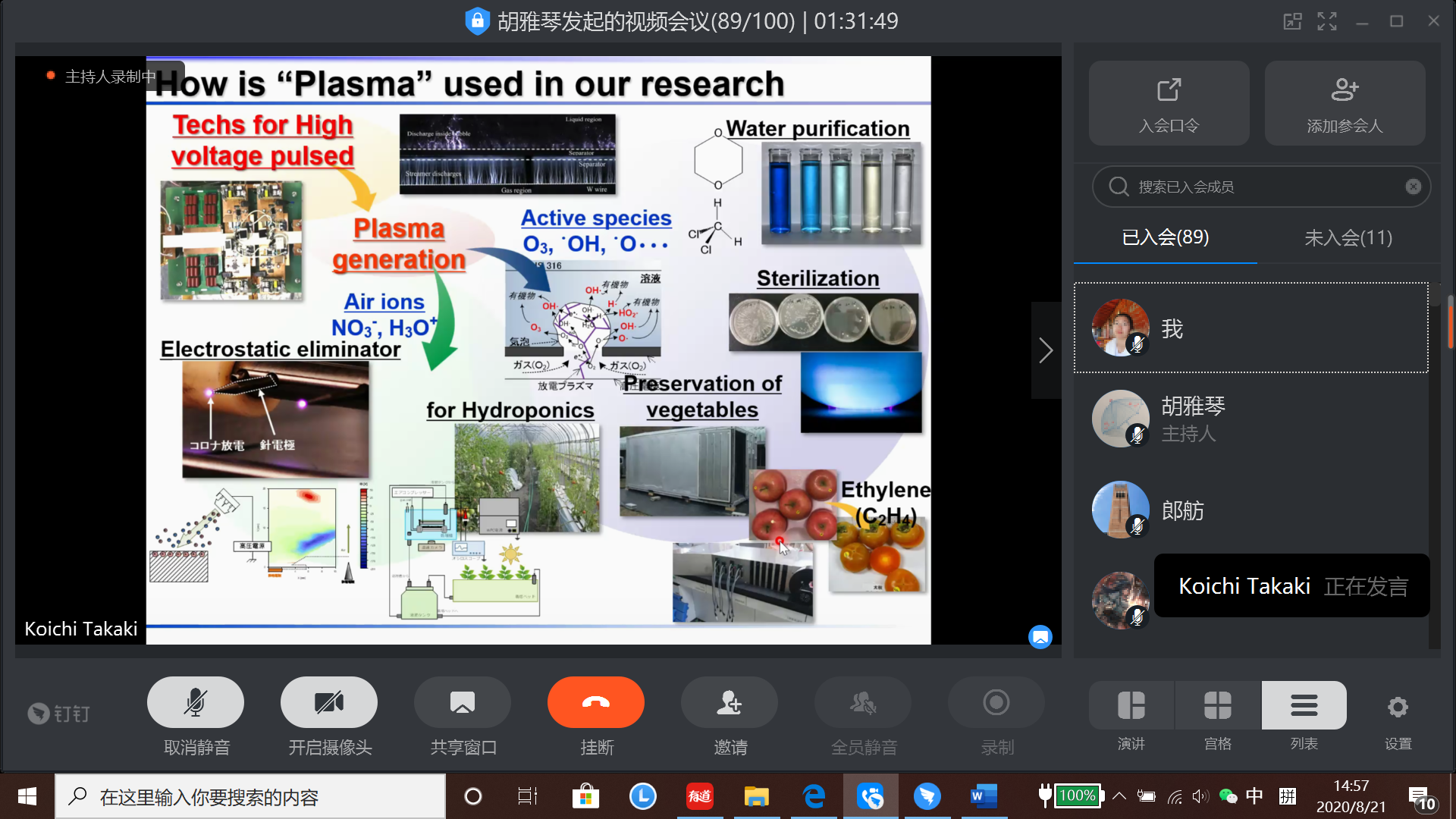
Then, Dr. Takaki explained thepossible mechanism of plasma. For example, pulsed electric field (PEF) has impacton protein 3D structure change, which affects the enzyme activities. Besides, pulsedhigh-voltage produces intense high-electric field which can cause somebiological effects such as stress response (stimulation) and electroporation.Types of pulsed power also have biological effects, including reactive speciessuch as ROS and RNS, which are caused by gas and water discharges. These activespecies (·OH and ·O2-)contributes to inactivation of bacteria, reducing the infection risk.
Dr.Takaki has made a lot of advances in theplasma technology application. The pulsedischarge is used for promoting growth of the vegetables and fruits. The growthrate of the vegetables and sugar content in the harvested strawberry increasedby the plasma irradiation to the hydroponic solution. The pathogenic bacteria R. solanacearum in the liquid fertilizerdecreased from 107 to 102 CFU/mL by the plasma treatment.
The pulsehigh-voltage improved the mushroom yield. The yielding rate of Shiitakemushroom (L. edodes) is increasedwith the high-voltage stimulation in fruit-body formation phase, not only insize, but also in mushroom multiply. And the good news is that mushroomcultivated using this technology has already on sale now.
The AC high-voltage keeped freshness for arelatively longer period of agricultural products. The electrostatic effects suppressedthe permeation of small protein, which contributed to removing airbornebacteria and fungi spore from the storage house and container. This removal decreasedthe infection risk with fungi and bacteria.
The pulse DBD remediated air and liquid to inhibit degradation of agriculturalproducts via ethylene removal through oxidization reaction. Some kinds of fruitand vegetable emitted the ethylene gas which accelerated the degradation ofother kinds of fruits and vegetables.
Theseapplications provide a potential food supply chain in the world. Currently,this technique is used for agricultural products. Maybe applications in marinefood can be further explored in the future.
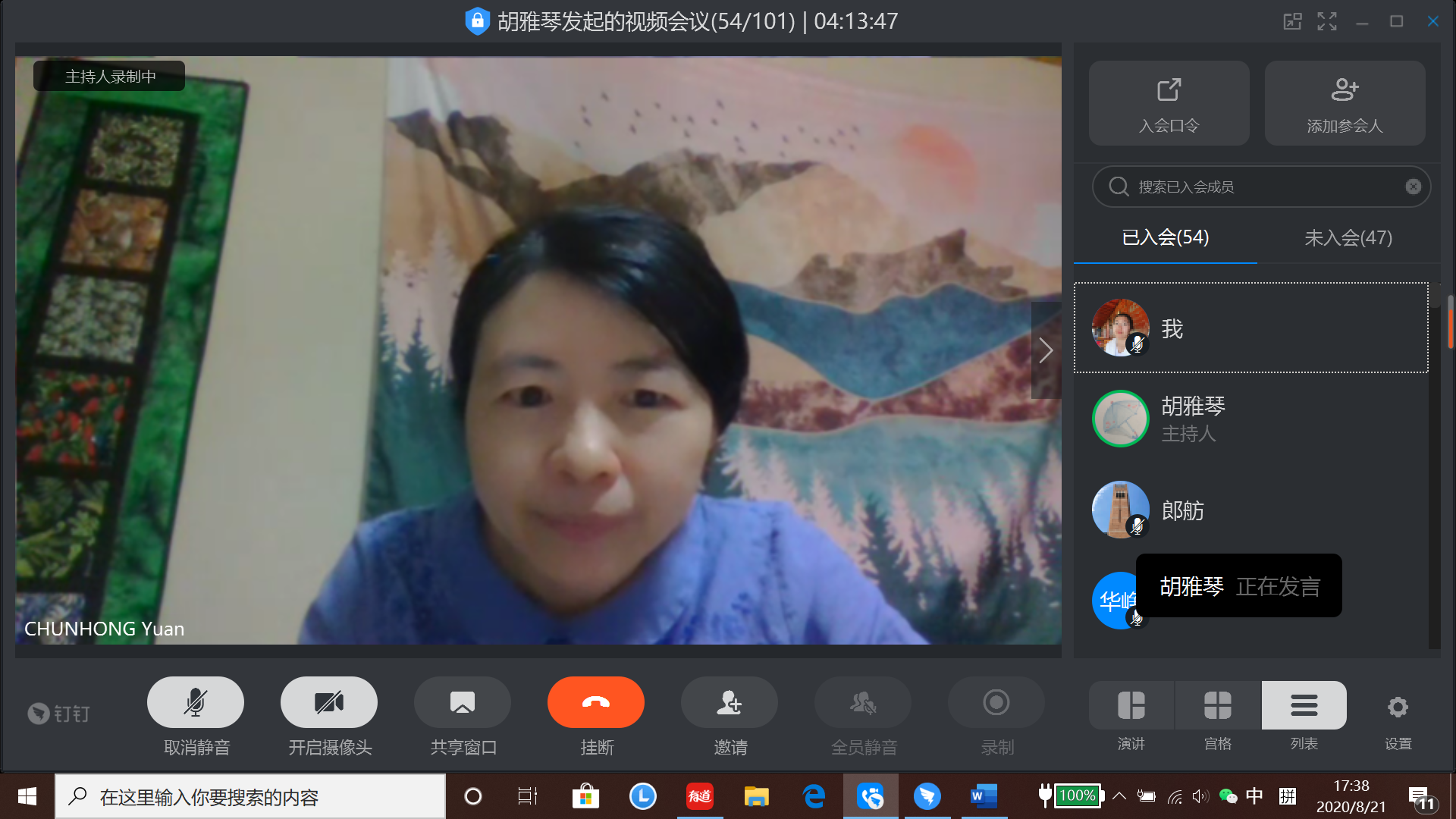
At last, Dr. Chunhong Yuan gave alecture on “Recent Freshness Preservation Technology of Fish and Shellfishfrom Catch to Consumption in Japan”. She mainly introduced “What isfreshness”, “How to keep freshness”, and several case study in Japan on fisheryproducts.
The consumption of fish and shellfish products hasbeen increasing steadily in recent years due to the broad awareness of thehealth and nutritional benefits of seafood, as well as cultural influence andsocial status symbol. Sashimi (Sliced raw fish meat) and Sushi, originatingfrom Japanese cuisine has gained popularity worldwide, and become one of thefastest growing food segments in food industry today. The most popular sashimior the topping of sushi mainly include but is not limited to shrimp, squid,salmon, tuna and other marine fish or co-products. The fish used as a rawmaterial must be fresh.
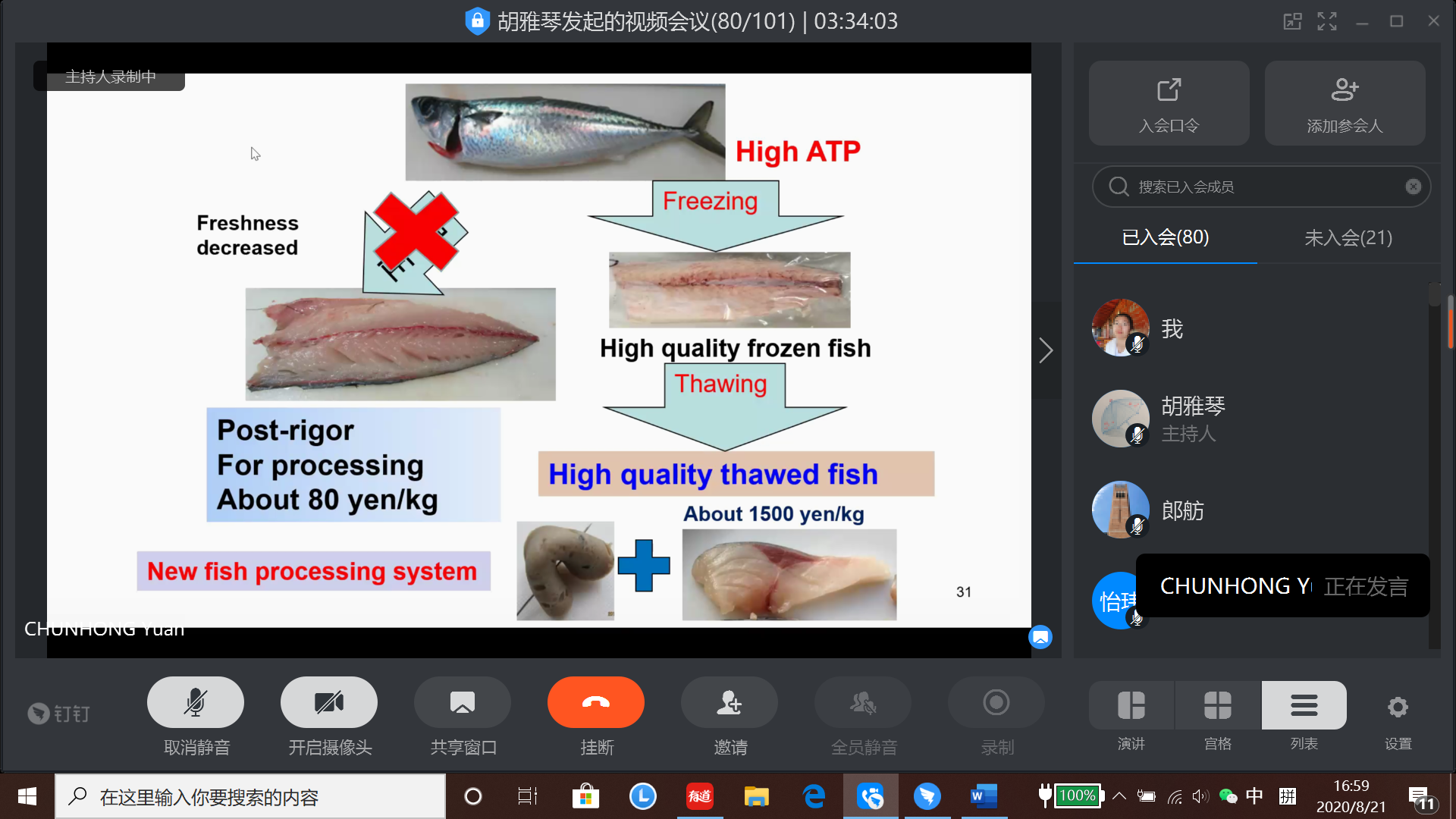
Dr. Yuanpresented recent scientific viewpoints of new techniques and technologies forfreshness preservation and safety assurance of fish and shellfish in Japan,especially the case study of spotted mackerel (Scomber australasicus)and Japanese scallop (Patinopecten yessoensis). Postmortem change offish develops from pre-rigor, rigor, post-rigor, and decay. The fish freshnessis highly correlated with indexes of pH, ATP, K value, microstructure, texture,myofibril ATPase, sensory evaluation, TVB-N, TMA, TBARS, TPC, etc. Among them,K value is the key index to evaluate the freshness of aquatic products.
Fish freshness maintenance involved keytechnologies to develop high quality, freshness-keeping technology, includingcatching, killing and storage, as well as freezing and thawing to avoid driploss. pH and ATPase activity decreased quickly after fish death. Differentkilling methods showed large effects on initial post mortem period. Besides, instantfreezing kept high quality, possible for value-adding. Application of slurryice (small, spherical crystals) decreased the damage to fishery products andprolonged its shelf-life. Moreover, FDA guidelines demonstrate that freezingtreatments are required to kill parasites for consumer safety reasons. And itis illegal to serve raw fish (sashimi) that has not been previously frozen.
According to Dr.Yuan’s research: 1. Keeping scallop in shell during cold storage might beuseful for keeping scallop freshness and quality during market distribution; 2.The ATP-related compounds decomposition rate of the scallops afterfrozen-thawing increased significantly during storage; 3. K-value for freshnessevaluation differed between fresh and frozen type; 4. AdR is difficult to bedetected during storage in scallop; 5. There is a small amount of IMP accumulation in scallops,and the decomposition rate of IMP is very low during storage.
Three professors from Iwate University delivereda special lecture of new technology developments in fishery products. They alsodemonstrated potential research interests and further challenges of currenttechnology. Students were encouraged to explore further research andapplication in this field.